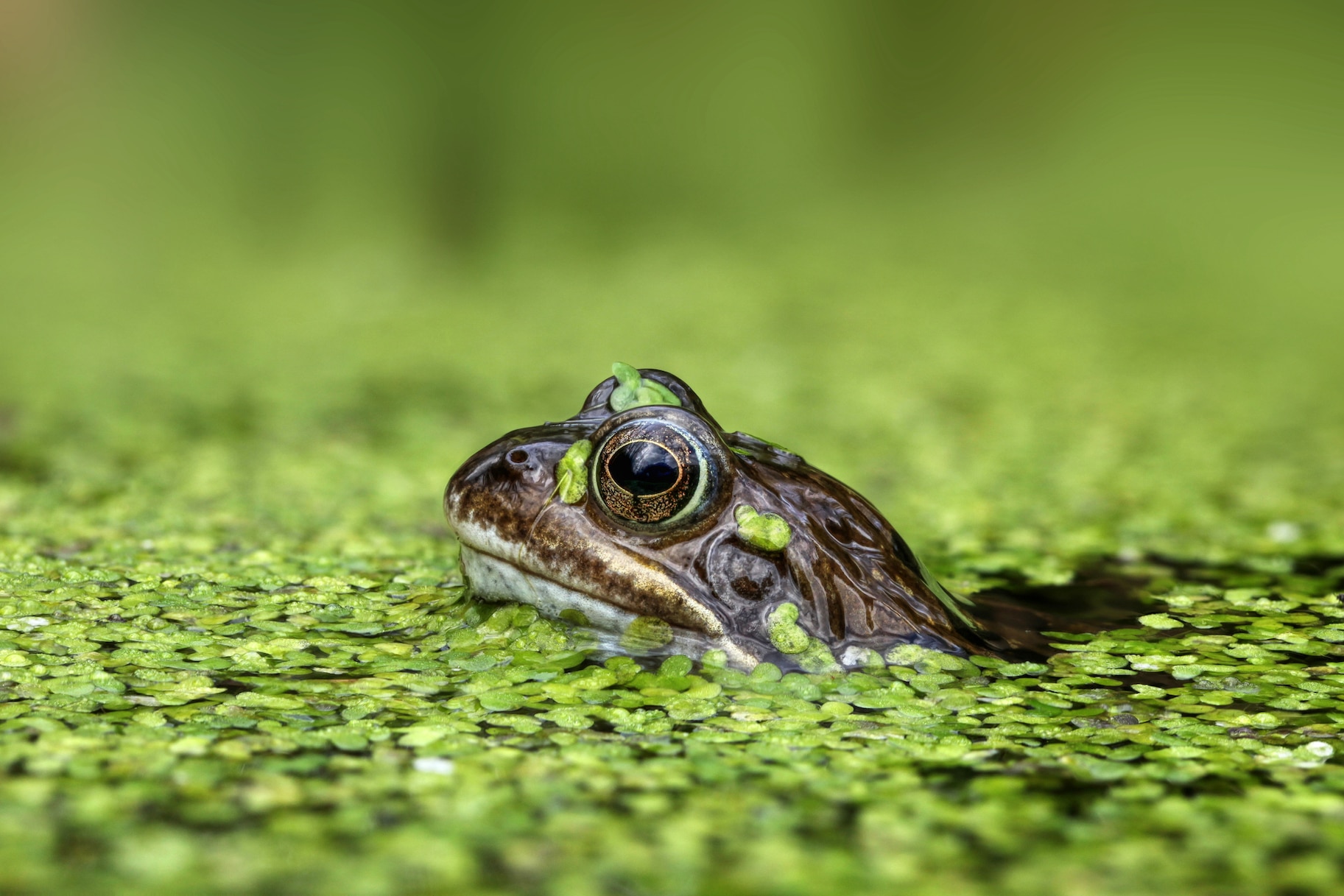Create a free profile to get unlimited access to exclusive videos, sweepstakes, and more!
As amphibians die out, human disease rises
Frogs had our backs, and we didn't appreciate them.

Frogger was among the most popular video games of its day and it recently got the live action treatment in the form of a gameshow streaming on Peacock. In both the show and the video game it’s based on, a frog — or a human contestant — attempt to navigate the many perils of modern life. Navigating an obstacle course of lily pads and floating logs, like navigating the real world, provides countless opportunities for failure. In the game of life, failure often results in death.
While digital frogs and human contestants have hopped their way to high scores and big prizes, real world amphibians aren’t having as good a time of things. Loss of habitat, invasive species, pollution, and disease all conspire against our affable amphibian friends, driving their numbers down and in some cases ending in extinction.
We often think of population decline or species loss as something which happens outside of our own experience. Species disappear and it’s sad because we’ll never see them again but that’s about where our feelings end. We don’t often think of the ways in which their loss can ripple across the rest of the planet and impact other species, including us.
Scientists from the Smithsonian Tropical Research Institute, the University of Maryland, and the University of California, Davis studied the impact of amphibian decline on the wider ecosystem and found that frogs are more important to us than we may have realized. Their results were published in the journal Environmental Research Letters.
Frogs and other amphibians are under constant threat from a fungal infection caused by Batrachochytrium dendrobatidis, Bd for short. It’s estimated that hundreds of species have been decimated or wiped out as a result of the fungus. Once infected, the pathogen eats away at the frogs’ skin and eventually causes a fatal heart attack. It’s estimated that more than 500 amphibian species have been affected by the disease with approximately 90 of them being driven to extinction.
Researchers used ecological surveys, satellite data, and digitized public health records in an attempt to draw a line between the reduction of amphibian species around the world and the rate of disease infections in humans. To make their comparison, they looked specifically at Costa Rica and Panama, two countries who experienced a rash of Bd outbreaks in recent years.
They found that in the years following a dramatic loss of amphibians, the number of malaria cases in the two countries increased dramatically. They estimate that Costa Rica and Panama experienced between 0.76 and 1.1 additional malaria cases per 1,000 people every year for about six years after Bd wiped out amphibians in the region.
That might not sound like a lot, but according to the paper, the case counts per 1,000 people peaked at 1.5 and 1.1 for Costa Rica and Panama respectively. That means the proportion of cases correlated to the loss of amphibians is significant. While we can’t draw a direct line between the rise in cases and the loss of amphibians, there is a reasonable argument to be made for a causal relationship.
Adult frogs and other amphibians consume adult mosquitos and help to keep their population in check. The more frogs you have hopping around, the less likely it is that a malaria-carrying mosquito will find its way to you. In fact, amphibians work to control mosquito populations nearly from the moment they are born. Tadpoles, for instance, hunt and eat mosquito larvae, further reducing their numbers before they ever have a chance to take wing.
Interestingly, after about six years the number of cases per 1,000 people dropped back down to the background rates. Scientists aren’t yet clear on what drove that decline. Perhaps some other animal stepped in to fill the gap amphibians left behind. Whatever the reason, it’s a clear reminder that we don’t exist in a vacuum. Each individual thread in the web of life impacts every other, and if we want to maintain a balanced place within our ecosystem, we might need to clear the road for frogs.


























